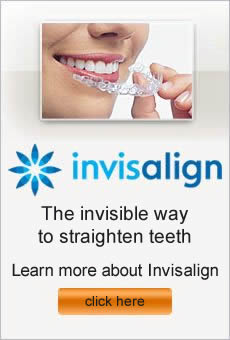When you have braces, oral care can be tricky. Brackets, wires, rubber bands, and other orthodontic appliances can catch food. Breakage can occur if you don’t watch what you eat. Understanding how to protect your orthodontia and your teeth will help ensure a successful outcome.
Flossing with Braces
Although flossing is more difficult, it’s especially important when you have braces. To make it easier you may need to buy flossers, which will help you thread the floss between the wires. As you floss, don’t pull to hard on the arch wire.
Brushing Tips
With braces, you need to brush after every meal to remove any trapped food particles. Carry a travel toothbrush and toothpaste to make it easier during your busy day.
Avoid Problem Foods
Certain choices like sticky treats and hard substances aren’t a good idea while you have braces. Pretzels, popcorn, suckers, and taffy can pull off brackets or damage wires, so save these goodies for after you finish treatment.
Safeguard Your Smile
If you play sports or participate in activities that could involve contact, like basketball, soccer, and even skateboarding, ask your orthodontist about a mouth guard. These plastic devices cover teeth and gums to prevent mouth injuries.
Keep your orthodontist informed
If you break a bracket or have a wire come loose, call your orthodontist’s office and find out the next steps. You can cover the area with dental wax to prevent irritation. Don’t try to repair the problem yourself because you could cause further damage.
Sherman Oaks, CA orthodontic office – Mehdi Fotovat, DDS.
The field of orthodontics focuses on the correction of teeth and jaws that are improperly positioned. To become an orthodontist, a dentist must complete an additional two to three years of training after finishing dental school. Orthodontics is recognized as one of several dental specialties by the American Dental Association (ADA).
Check out these interesting tidbits about orthodontics:
• Orthodontists treat over 5 million patients in the U.S. and Canada, more than double the number of patients treated in 1982, the first year that the American Association of Orthodontists (AAO) tracked the number of patients.
• Orthodontic treatment has continued to grow in popularity. Since 1982, the number of patients who seek orthodontic treatment has increased by 115 percent.
• While you can achieve a straight smile at almost any age, most patients begin treatment between the ages of 9 and 14.
• Adults can also benefit from orthodontic treatment. Approximately 20 percent of patients are 18 years or older.
• Treatment time will vary from cases to case, based on individual circumstances. Most orthodontic treatment, however, takes 12 to 36 months, with the average time being 24 months.
• Though metal braces are still a choice, other options exist to straighten your smile. Invisalign clear aligners, lingual braces, and ceramic brackets offer subtle options to correct crooked or crowded teeth.
• The first certified orthodontist in the U.S. was Dr Charles Tweed.
• Pierre Fauchard constructed the first braces in 1728, which consisted of a flat strip of metal that connected to teeth by pieces of thread.
Sherman Oaks, CA orthodontic practice – Mehdi Fotovat, DDS
If you or a loved one needs orthodontic treatment, you probably have a basic understanding of what that process entails. Most people have a concept of traditional braces and how they work to straighten teeth. Often, people have inaccurate ideas about orthodontic treatment. Understanding fact versus fiction will make your experience more pleasant.
Myth: If my braces don’t hurt, they aren’t working.
Fact: At one time, people wearing braces had to endure stiff wires, which exerted heavy pressure and caused discomfort. With modern, flexible wires, you will feel very little pain, if any, as your teeth move into the correct position.
Myth: The space between my teeth will close right away.
Fact: Once they get braces, many individuals expect the spaces to start closing immediately. It takes time for teeth to start moving.
Myth: After braces, my smile will stay perfect forever.
Fact: Your teeth are connected to bone by elastic fibers. After treatment, these fibers may try to shift the teeth back into the incorrect position. Wearing your retainer as instructed will keep your gorgeous smile intact.
Myth: My family dentist can take care of my orthodontic treatment.
Fact: Just as you wouldn’t see your general physician for a heart problem, you need to have an orthodontist assess your situation. Orthodontists have an extra two years of training in dealing with bite and alignment issues. In addition, Dr. Mehdi Fotovat and Dr. Victor Sands have been clinical instructors in the past.
Myth: Metal braces are the only option for treatment.
Fact: As orthodontic care has advanced, other choices have become available to give patients the beautiful smiles they desire. Ceramic brackets, lingual braces, and Invisalign clear aligners can allow correct misalignment and straighten teeth. After evaluating your mouth, your orthodontist will review your case and explain the best options.
Sherman Oaks, CA orthodontic practice – Mehdi Fotovat, DDS
If you child plays any type of contact sport, you need to protect their face and mouth. More than seven million injuries are sustained by individuals from ages 5 to 24 during sports-type activities. The American Association of Orthodontists (AAO) recommends that anyone who participates in these events wear a mouth guard. With a mouth guard, you can reduce the risk of concussion by 50 percent.
Mouth guard basics:
• Made from plastic materials, mouth guards cover teeth and gums. Different types of mouth guards are available: stock, boil and bite, and custom.
• Stock mouth guards are the least expensive choice, but they don’t fit very well and they offer limited protection. You can find stock mouth guards at any sporting goods store.
• A slightly better choice, boil and bite mouth appliances are placed in hot water and then allowed to mold to the shape of your teeth. Boil and bite mouth guards can also be purchased from sport goods retailers.
• Custom mouth guards offer the best coverage. These devices are designed to fit your specific teeth and gums. Your orthodontist will take a model of your teeth and send it to a dental lab to construct the custom appliance.
• Once your orthodontist receives the mouth guard from the lab, you can schedule a return appointment to check the fit.
• To care for your mouth guard, store the device in a safe place when you aren’t wearing it and clean the mouth guard with warm water after each use.
• If you have braces, ask your orthodontist about what type of mouth guard to wear to protect your mouth.
It’s time to schedule a visit to our Sherman Oaks, CA orthodontic office – Mehdi Fotovat, DDS.
Though you may have a basic understanding of orthodontic treatment, the lingo can be overwhelming. Knowing the difference between head gear and a retainer will make navigating the waters a little easier. Review the following terms to increase your orthodontic vocabulary.
Appliance
Any device the orthodontist uses to move teeth or reposition your jaw. Appliances can be fixed, like braces and expanders, or removable, like head gear and retainers.
Band
The metal ring placed on your teeth to help hold braces in place.
Biteplate
A removable or fixed device that opens a deep bite by decreasing the vertical overlap of the upper and lower incisor teeth.
Bracket
The ceramic or metal piece cemented to teeth and used as the fastening mechanism for the arch wire.
Braces
Used to align teeth and correct the bite, braces come in various forms, including metal brackets, ceramic brackets, and lingual braces, which are attached behind the teeth.
Diastema
A noticeable space between two teeth, often the front teeth.
Head gear
An orthodontic device used to move your teeth back in your mouth and create room for crowded teeth.
Invisalign aligners
The latest in orthodontic treatment options, Invisalign uses a series of clear, custom trays to gently shift teeth into place. Older teens and adult patients often choose Invisalign over traditional metal braces.
Occlusion
How your upper and lower teeth are aligned and spaced when you bite down.
Palatal Expander
Temporarily placed on the upper arch, a palatal expander helps widen the upper jaw so that the bottom and upper teeth fit together like they should.
We care about your smile at Mehdi Fotovat Sherman Oaks Orthodontist



